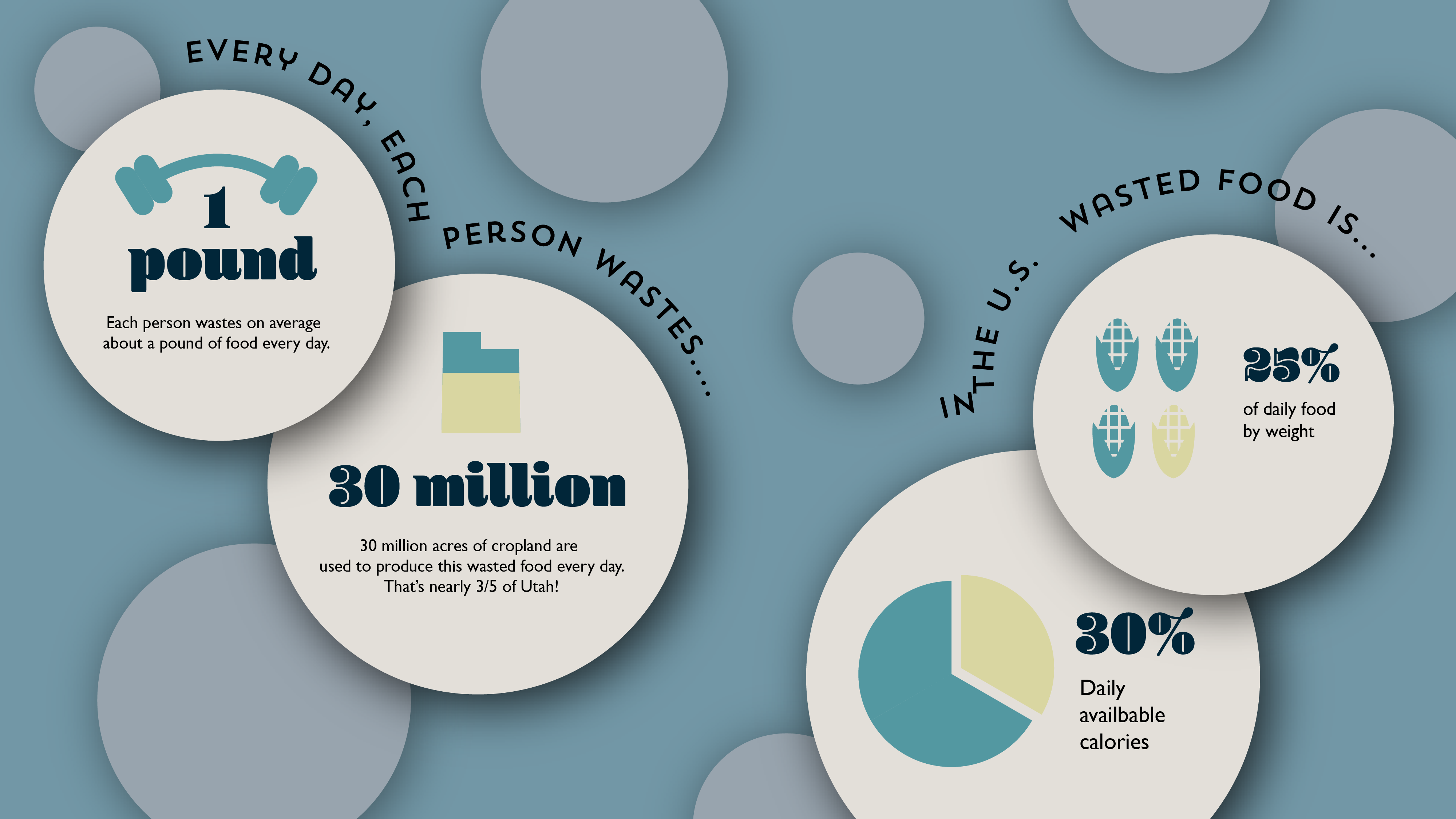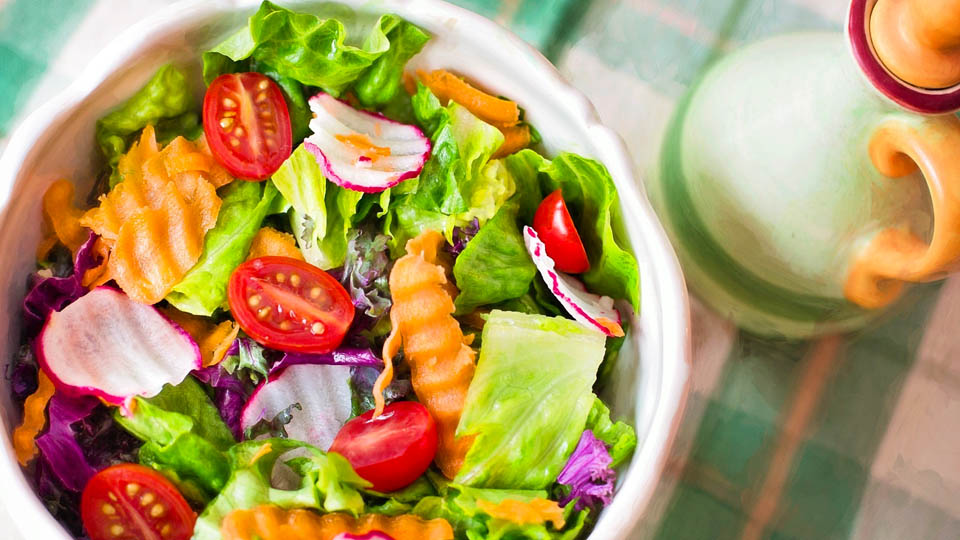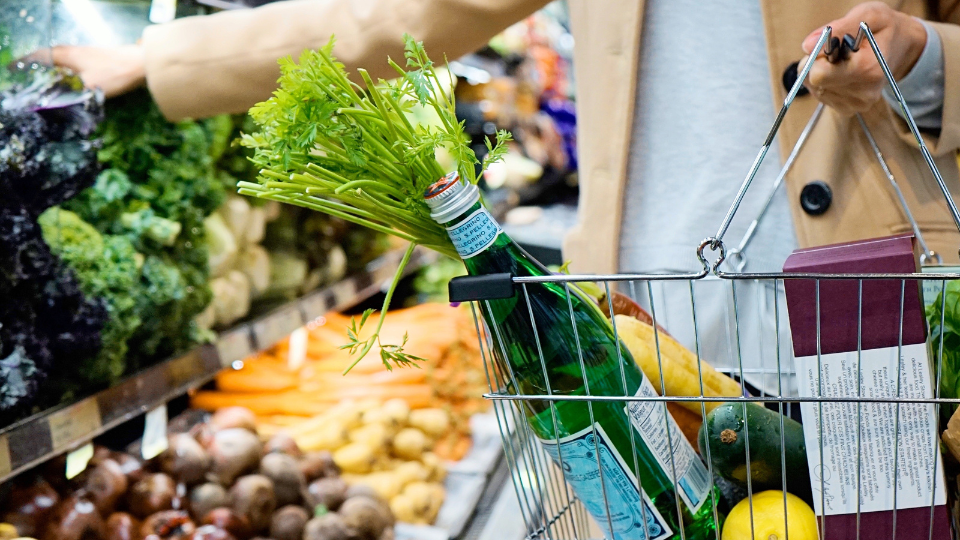Food Waste Prevention Part 1: Introduction
 No one likes wasting food, but in the United States each person wastes on average about a pound of food every day. Thirty million acres of cropland is used to produce this wasted food every year. To learn more about options to reduce food waste and resources to help you get started read on!
No one likes wasting food, but in the United States each person wastes on average about a pound of food every day. Thirty million acres of cropland is used to produce this wasted food every year. To learn more about options to reduce food waste and resources to help you get started read on!
Food waste impacts many areas of our lives including what foods are available, how affordable food is, farmer’s resources and crop production, and the prevalence of natural disasters due to climate change. Food waste is a financial problem, social problem, and environmental problem. We all know that we need to do our part to help reduce food waste, and many of us are trying to change and are finding that reducing food waste in our households has unexpected benefits.
One area that has been studied recently is the impact food waste has on individual and household expenses. According to a study done on the cost of food wasted, the average American spending over $1300 per year on food that ends up being wasted. This expense is greater than many other annual expenditures including vehicle gasoline, apparel, household heating, electricity, property taxes, household maintenance and repair, and insurance for an average single person household in 2017. For most people some food will always be thrown away, but making small changes can help save money and food. Read on for solutions and resources you can start using today:
- Part 2: Meal Planning
- Part 3: Grocery Shopping
- Part 4: Using Leftovers
- Part 5: Dates on Food and Safe Storage
- Part 6: Introduction to Increasing Cooking Skills and Preserving Foods
- Part 7: “Wait! Don’t throw that away!” Composting and Creative Recipes

Here are some common habits that lead to consumer food waste and simple solutions and resources to help change those habits:
Causes of Food Waste |
Possible Solution |
Resource |
|---|---|---|
| Not eating the foods that are already in your home. | Keeping an inventory of food in your home and meal planning according to what you have. | Part 2: Meal Planning |
| Large amounts of food purchased and then forgotten or not used. | Making a grocery list and sticking to it. | Part 3: Grocery Shopping |
| Not understanding and interpreting food labels correctly can lead to questioning the safety of food and disposing of it while it is still safe. | Understanding food labels and food safety. | Part 5: Food Labels and Food Safety |
| Poor culinary skills or knowledge of how to prepare or preserve foods. | Increasing your cooking skills Learning how to use the freezer to save foods for later. | Part 6: Introduction to Increasing Cooking Skills and Preserving Foods |
| Not saving or finishing leftovers. | Planning ahead to use leftovers in safe and appetizing ways. | Part 4: Using Leftovers |
| Buying produce then forgetting about it until it has already gone bad. | Preserving foods that easily spoil like produce (freezing, canning) Using a meal plan to consume delicate produce shortly after purchase (bagged salad, green beans, berries, etc.). |
Part 6: Introduction to Increasing Cooking Skills and Preserving Foods |
References
- Conrad, Z. (2020). Daily cost of consumer food wasted, inedible, and consumed in the United States, 2001–2016. Nutrition Journal, 19(1). doi: 10.1186/s12937-020-00552-w
- Conrad, Z., Niles, M. T., Neher, D. A., Roy, E. D., Tichenor, N. E., & Jahns, L. (2018). Relationship between food waste, diet quality, and environmental sustainability. Plos One, 13(4). doi: 10.1371/journal.pone.0195405
- Farrell-Poe, K., & Koenig, R. (2011). Backyard Composting in Utah. Utah State University Cooperative Extension. https://digitalcommons.usu.edu/cgi/viewcontent.cgi?article=1489&context=extension_curall
- Romani, S., Grappi, S., Bagozzi, R. P., & Barone, A. M. (2018). Domestic food practices: A study of food management behaviors and the role of food preparation planning in reducing waste. Appetite, 121, 215-227. doi: 10.1016/j.appet.2017.11.093
- Spiker, M. L., Hiza, H. A., Siddiqi, S. M., & Neff, R. A. (2017). Wasted food, wasted nutrients: Nutrient loss from wasted food in the United States and comparison to gaps in dietary intake. Journal of the Academy of Nutrition and Dietetics, 117(7). doi: 10.1016/j.jand.2017.03.015
Authors
Annika Israelson, Dietetics Student, Utah State University; Meghan Adair, Dietetics Student; Carrie Durward, Ph.D., RD, Extension Nutrition Specialist
Related Nutrition Articles






